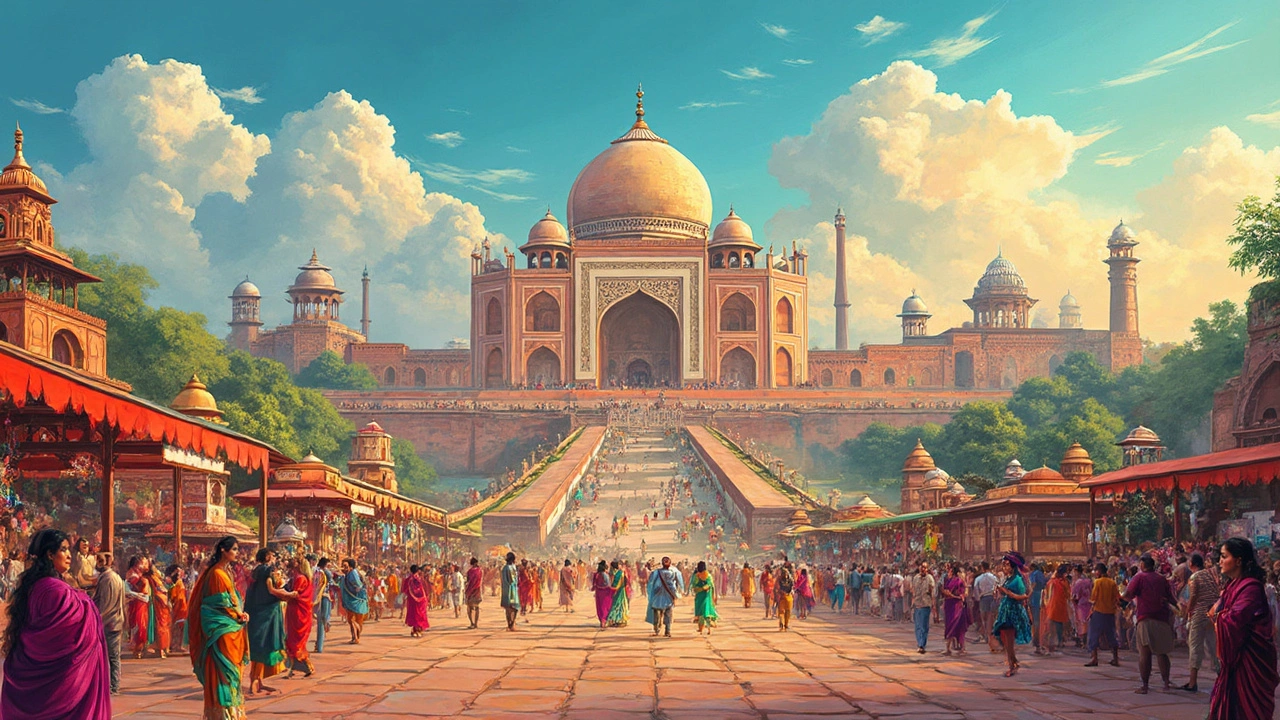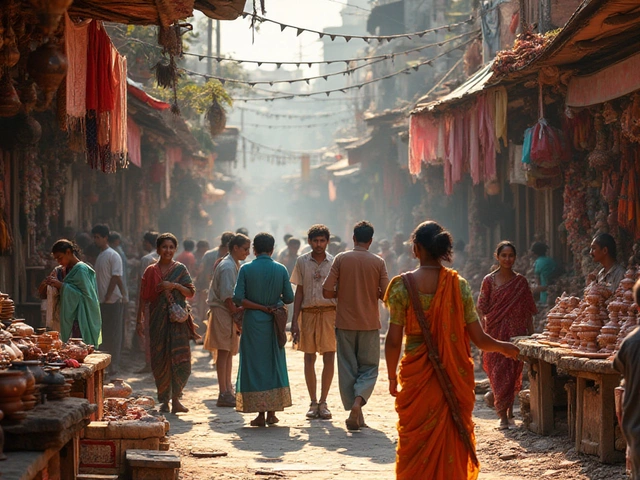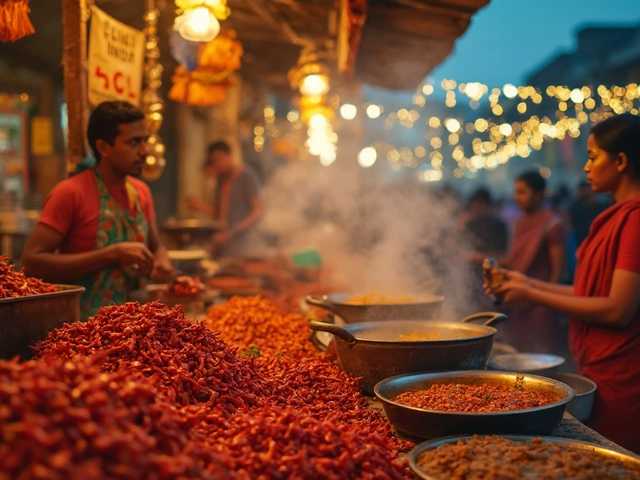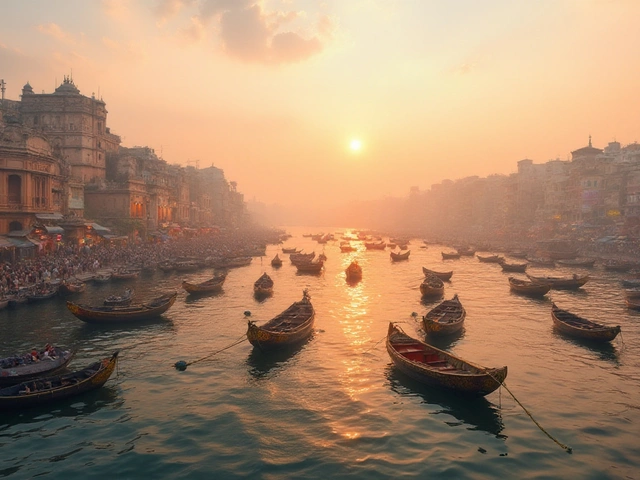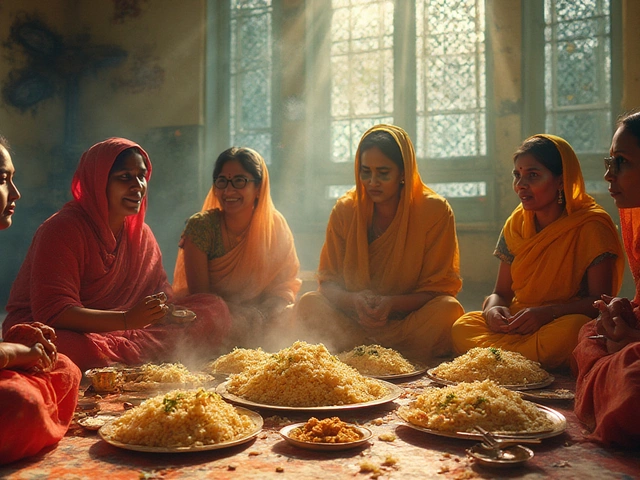So, how many cultural heritages does India really have? The answer depends on what you count—because it’s not just ancient forts and temples. In India, cultural heritage covers everything from world-famous monuments to living traditions, folk music, even certain kinds of street food.
The numbers do get a little wild. If you’re talking about UNESCO World Heritage cultural sites, India had 32 on the official list as of early 2025. But the story doesn't end there. India’s government tracks thousands more under its own lists—including about 4,000 protected monuments and over 100 forms of 'intangible' heritage like dance, language, craft, and even storytelling traditions.
Just to put things in context: One single state—Uttar Pradesh—counts over 700 listed monuments. That’s more heritage sites than some countries have in total.
This article isn’t just lists and numbers though. You’ll find tips on how to see the best sites (and avoid tourist traps), ways to spot real local traditions, and info on how India keeps all this culture alive in real life—not just history books.
- What Counts as Cultural Heritage in India?
- UNESCO’s Role and the Big Numbers
- State-wise Surprises
- Hidden Gems Beyond the Famous List
- How to Experience Indian Heritage Yourself
What Counts as Cultural Heritage in India?
This might surprise you, but Indian cultural heritage isn’t just old buildings or ancient artifacts. It goes way beyond that. In official terms, there are two main buckets: tangible heritage and intangible heritage.
Tangible means things you can actually touch or see. We’re talking about buildings, carvings, manuscripts, paintings, and even cities or towns with unique historical layouts. Classic examples? The Taj Mahal, Jaipur’s walled city, and the ancient caves of Ajanta and Ellora.
Intangible heritage is all about things you can’t exactly hold in your hands. This covers traditions, festivals, languages, music, dance, folk art, and even rituals passed down across generations. Think of yoga, the classical dance Bharatanatyam, or the Kumbh Mela festival. India’s list of “Intangible Cultural Heritage” recognized by UNESCO is growing fast—there are 14 entries from India on the official list right now.
- Monuments and Sites: About 4,000 centrally protected by the Archaeological Survey of India (ASI).
- Handicrafts and Traditions: Over 100 traditional art forms and skills are protected.
- Festivals, Rituals, Performing Arts: Recognized both by the government and UNESCO, including everything from Diwali to the tribal Hornbill Festival in Nagaland.
Here’s the kicker—anyone can propose something for heritage status. Locals nominate old stepwells, ancient musical styles, or even historic local foods.
To clear up how wild all this is, check out this simple breakdown:
| Type | Examples | Approx. Recognized in India |
|---|---|---|
| Tangible | Taj Mahal, Qutub Minar | 4,000+ sites |
| Intangible | Yoga, Kumbh Mela, Vedic chanting | 100+ forms (official lists) |
So, Indian cultural heritage is basically a giant mix of the old, the living, the hidden, and the famous. No other country has a list quite this big or this varied. The coolest part? The list keeps growing every year.
UNESCO’s Role and the Big Numbers
The first thing you’ll notice about UNESCO is it doesn’t just hand out flashy plaques to anyone. Getting on the UNESCO World Heritage list means your spot or tradition is recognized as super valuable for all of humanity, not just your local crowd. For India, that’s a big deal—because this country racked up 32 cultural sites as of 2025, and that number keeps creeping up.
What makes it official? UNESCO experts look at age, uniqueness, cultural impact, and sometimes plain old wow-factor. In India, this list includes heavy hitters like the Taj Mahal, Jaipur’s old city, and the temples of Khajuraho. But you’ll also spot less hyped places like Sanchi’s Buddhist monuments or the mountain railways.
| Cultural Heritage Site | Location | Year Inscribed |
|---|---|---|
| Taj Mahal | Uttar Pradesh | 1983 |
| Mahabalipuram Monuments | Tamil Nadu | 1984 |
| Jaipur City | Rajasthan | 2019 |
Out of UNESCO’s picks, India’s cultural sites actually outnumber its natural sites. And you’ll find these spots all across the map—not just in the big tourist cities.
Want to dig deeper? Beyond monuments, there’s another category: the UNESCO Representative List of the Intangible Cultural Heritage of Humanity. Here, India’s been recognized for things like the Vedic chanting tradition, Ramlila performance, and even traditional yoga.
- India ranks 6th worldwide for the total number of UNESCO world heritage sites as of 2025.
- UNESCO heritage can boost tourism but also offers money and advice to help locals protect these spots long-term.
- The UNESCO badge often means big crowds—so check visiting hours and book tickets early for top sites.
In short, if you want to figure out which places have the global stamp of approval, just scan India’s UNESCO heritage lists first. You won’t hit everything, but you’ll catch the must-sees and the stories that make this country stand out worldwide.
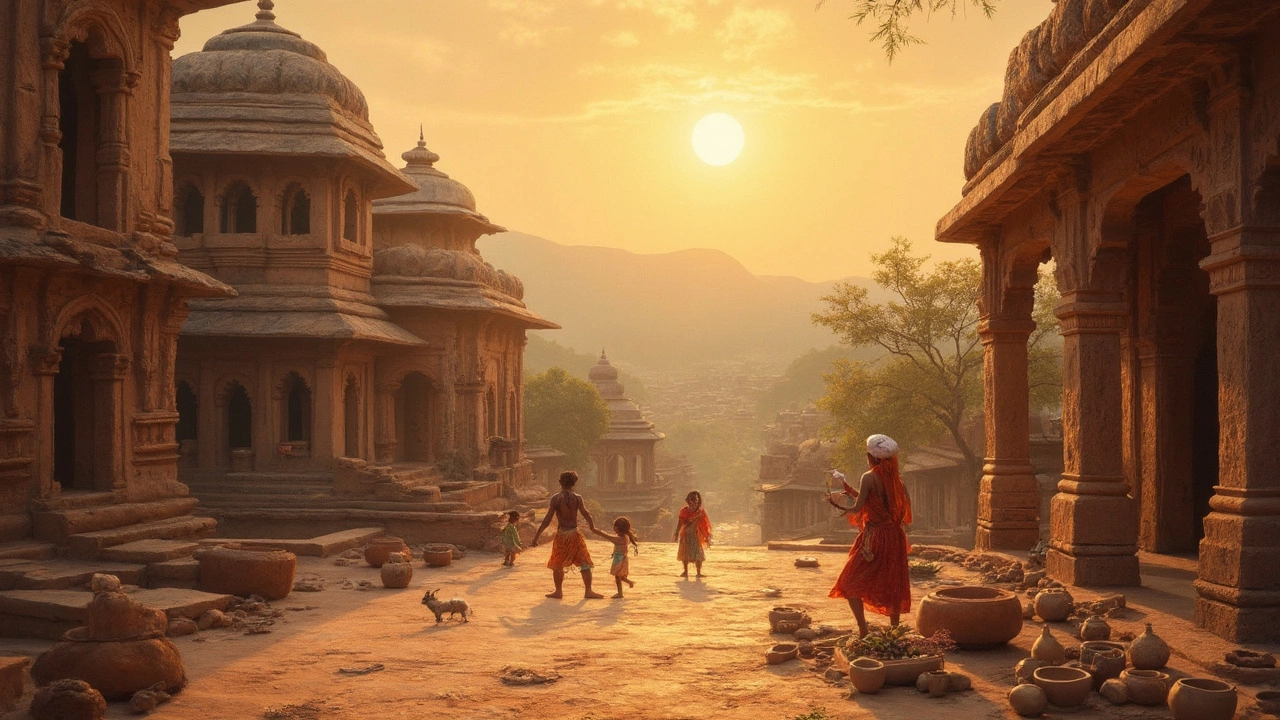
State-wise Surprises
Here's where things get really interesting. Everyone knows India is big, but when you break down Indian cultural heritage by state, the differences are huge. Uttar Pradesh leads the pack with over 700 government-protected monuments. That’s more than some entire countries manage! Delhi packs in nearly 170, with heavyweights like Red Fort and Qutub Minar, both on the UNESCO list. Down south, Tamil Nadu isn’t far behind—locals sometimes call it "the land of temples" for a good reason: it hosts more than 2000 ancient temples, with 41 recognized as state-protected monuments and 8 as UNESCO cultural sites as of this year.
But heritage is more than just buildings. In West Bengal, Durga Puja—the big annual festival—was officially listed as an Intangible Cultural Heritage by UNESCO, reflecting how festivals and community traditions count too.
Check out this quick rundown:
| State | Govt-Protected Monuments | UNESCO Sites |
|---|---|---|
| Uttar Pradesh | 700+ | 3 |
| Tamil Nadu | over 2,000 temples (41 government-protected) | 8 |
| Maharashtra | around 500 | 4 |
| Delhi | 170 | 3 |
| West Bengal | 100+ | 1 Intangible |
It’s not just quantity. Some states boast unique stuff you won’t find anywhere else. Rajasthan mixes vibrant living culture with palaces like Amer and Jaisalmer Fort. In the northeast, small states like Manipur protect centuries-old traditions—think costumes, dances, and languages that might not make global lists but mean everything locally.
"India’s states are like museums, each with their own stories, art, and flavor you can’t replicate anywhere else," says Dr. Shikha Jain, heritage conservation expert.
Travelers sometimes get stuck just visiting the big sites, but if you want a real taste of India’s diversity, dig into what’s on offer locally. Keep an eye out for the state heritage lists when planning trips—they contain hidden gems you’d never find by Googling just UNESCO stuff. Talk to locals, check out small museums, and don’t skip festivals—they’re part of the Indian cultural heritage that’s growing every day.
Hidden Gems Beyond the Famous List
The big monuments like the Taj Mahal or Qutub Minar hog all the attention, but India’s cultural heritage is stacked with places and traditions most people outside the area never hear about. These spots might not have that UNESCO tag, but if you care about seeing real India, they’re worth a visit—or at least a Google search.
Take the Hampi Bazaar in Karnataka. Everyone talks about the ruined temples of Hampi (which is a UNESCO World Heritage site, no doubt), but the bustling bazaar, where shopkeepers still sell puja flowers and local snacks under the shadows of ancient pillars, often gets missed. Real story? The tradition of street markets here goes back over 500 years, and what happens in these lanes is just as telling about Indian life as the monuments themselves.
Or look at the living root bridges of Meghalaya. You won’t find these on the standard tourist bus tours. The Khasi and Jaintia tribes have been training rubber fig tree roots to grow into natural, sturdy bridges for centuries. Only a handful are signposted, but villagers say there are more than 100, some hidden deep in the jungle.
If you're after cultural sites with fewer Instagrammers, try:
- Unakoti, Tripura – This hillside is carved with giant faces and figures, some over 30 feet tall. Locals call it the "Angkor Wat of the East."
- Chittorgarh Fort's Secret Reservoirs, Rajasthan – While everyone checks out the main fort, take a side trail to the barely-visited water tanks used by royals during long sieges.
- Majuli, Assam – The world’s largest river island, packed with Vaishnavite monasteries and folk festivals that basically turn the place into a live museum.
Don’t just look at things; eat your way through the heritage, too. The intangible heritage lists in India include foods like Hyderabadi biryani and Bengal’s sandesh. Some small family-run traditional kitchens and sweet shops have been running more than a century, passing recipes down the line—no fancy certificates needed. Ask locals where to go, because half the time, the best places aren't online.
Just for a laugh, here’s a quick look at some of the “unlisted” treasures by category:
| Type | Region | Why it’s Special |
|---|---|---|
| Mud Temples | West Bengal | Made only with clay and cow dung, last rebuilt every year |
| Kalbelia Dance | Rajasthan | Recognized by UNESCO as intangible heritage, but real shows are off the tourist map |
| Handloom Weaving | Tamil Nadu | Whole villages weave for generations, often with patterns dating back centuries |
If you’re craving the real deal on India’s cultural heritage, don’t just stick to the big ticket names. Hidden gems are everywhere—sometimes in the next alley or village over. Always ask locals for tips, and if you stumble into a festival or a home-based workshop, even better. That’s where you see heritage still alive, not just preserved behind glass.
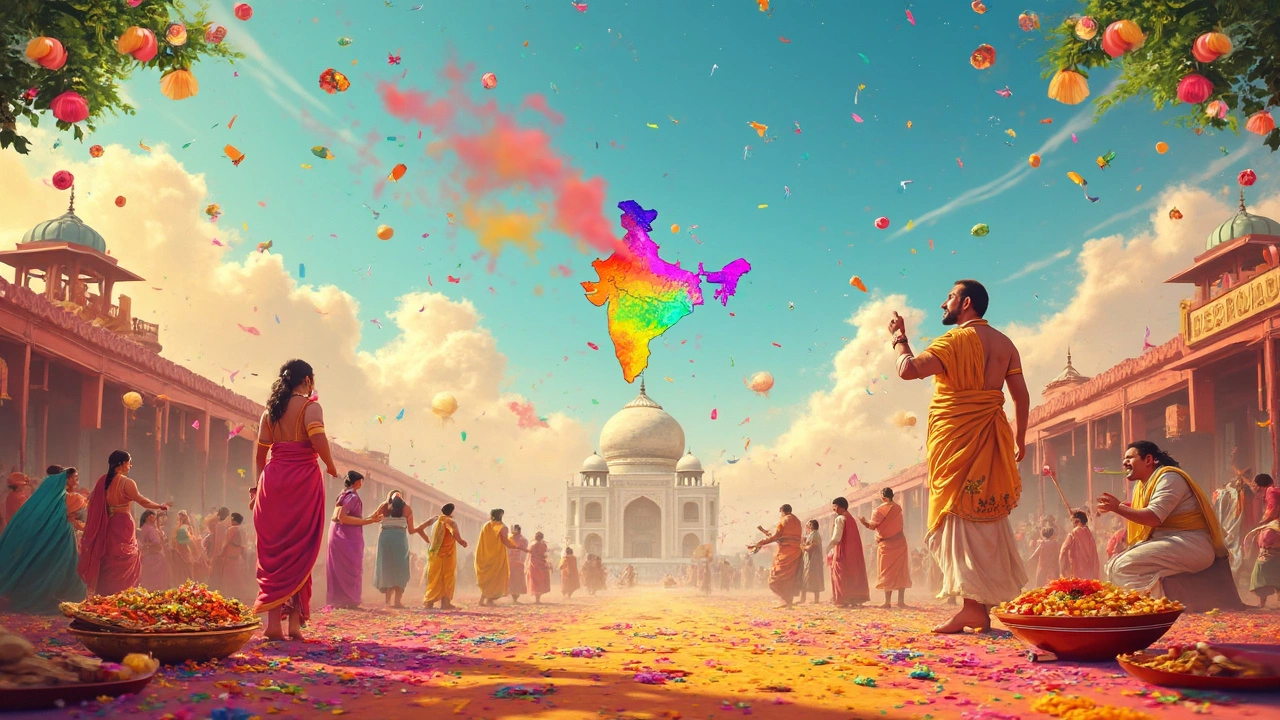
How to Experience Indian Heritage Yourself
You don’t need to be an expert on Indian cultural heritage to dive in. There are plenty of practical ways to actually experience it, whether you’re a local or a visitor. The real trick is knowing where to look, what to ask, and how to go beyond just snapping photos at famous monuments.
Start with the classics—like the Taj Mahal, Qutub Minar, or the temples of Khajuraho. These are part of India’s UNESCO World Heritage cultural sites list for a reason. But don’t skip other UNESCO picks like the forts of Rajasthan or Mumbai’s Chhatrapati Shivaji Terminus, where you’ll see Indian history mixed with colonial architecture. If you’re into numbers, India now boasts 32 UNESCO cultural sites, ranking high globally.
| Type of Heritage | Top Example in India | How to Experience |
|---|---|---|
| Monument | Taj Mahal | Guided tours, sunrise visit |
| Living Tradition | Varanasi Ganga Aarti | Attend evening ceremony on ghats |
| Food Heritage | Hyderabadi Biryani | Eat at local joints, join a food walk |
To see heritage as locals do, take in a live performance of classical dance (like Kathakali in Kerala or Bharatanatyam in Tamil Nadu), or hunt down an old city market—places like Kolkata’s New Market or Hyderabad’s Laad Bazaar. These aren’t museum exhibits; they’re the spots where traditions actually live.
If festivals are your thing, time your visit to catch a big one: Diwali, Holi, or Durga Puja are the heavy-hitters, but look out for region-specific ones too. Pulling the chariot at Puri’s Rath Yatra, or trading cattle at Pushkar Fair, drops you right into the thick of things. You’ll see how heritage stays alive not just in buildings, but in celebrations and everyday life.
Looking for special tips?
- Skip the set-piece shows aimed at tourists—ask locals about authentic experiences. Sometimes a simple chat with an artisan or temple priest teaches you more than any guidebook ever could.
- Try regional food specialties at food stalls and traditional homes, not just restaurants. Ask about the story behind the dish.
- Use local transport like cycle rickshaws or auto-rickshaws to soak in real street sights and sounds.
- Explore small towns like Orchha in Madhya Pradesh or Hampi in Karnataka for fewer crowds but loads of heritage charm.
The bottom line? India's cultural heritage isn’t locked in glass cases. It's loud, colorful, and happening all around you—if you know where to look and who to ask.
